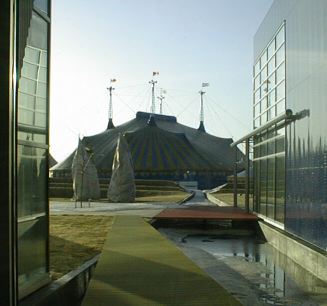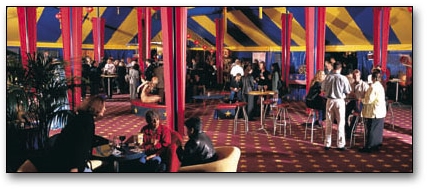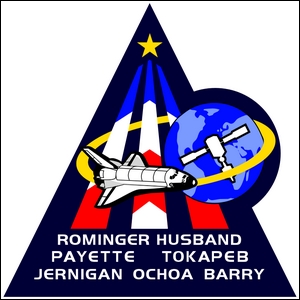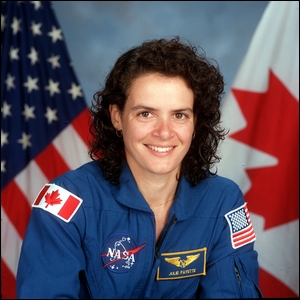

![]()
1980s
1982 · 19831984 · 1985
1986 · 1987
1988 · 1989
1990s
1990 · 19911992 · 1993
1994 · 1995
1996 · 1997
1998 · 1999
2000s
2000 · 20012002 · 2003
2004 · 2005
2006 · 2007
2008 · 2009
2010s
2010 · 20112012 · 2013
2014 · 2015
2016 · 2017
2018 · 2019
2020s
2020 · 20212022 · 2023
2024

THE END OF AN ERA (15 YEARS)
While artists get used to their new home in Orlando, Saltimbanco sets up shop in Asia and the Pacific, beginning a three-year tour of the region in Sydney, Australia (January 1999). In March, Quidam embarks on a four-year European tour in Amsterdam. And in May, Alegría, which has already dazzled audiences on three continents, finds a permanent home at Beau Rivage, a new Mirage resort in Biloxi, Mississippi. Cirque’s plans become even more ambitious with the release of its first feature film: Alegria. In the film, the magical spellbinding universe of Cirque du Soleil becomes the backdrop for a tender love story between a street performer (Frac) and the lead singer of a travelling circus (Giulietta). Franco Dragone directs the before-mentioned film and it’s the last project he works on for Cirque du Soleil. The end of an era is reached. Following the launch of “O” at Bellagio and La Nouba at Walt Disney World, the creative team behind so many of Cirque du Soleil's productions in the 1990s – Franco Dragone, Michel Crete and Dominique Lemieux – concluded their remarkable run of artistic and professional development with the company, leaving the creative reins to future shows in the hands of others and giving Cirque du Soleil an interesting dilemma to overcome during the first-half of the new millennium: how to move on from a very successful run of productions under the helm of Franco Dragone and his team of conceptors and show the world it could still re-invent the circus.
After "O", Cirque founder and owner Guy Laliberte wanted to accelerate Cirque's production schedule and expand the brand. Dragone, fearful of losing creative control and uncomfortable with this direction, departed. "I talked to Guy, and I say, 'We have already so many shows.' And he say, 'Oh, Franco, don't worry. There are so many places to do a show.'" There's nothing wrong with a company trying to grow, of course. Dragone actually agrees. He departed not because he dislikes commerce and profit. Dragone flew the Cirque coop because he didn't want to be a factory hand; he wanted to own his own factory. Franco would go on to form Dragone Productions and go on to bring his brand of entertainment to Las Vegas, China, and Dubai. EAST MEETS WEST
The Dralion tour launches Cirque du Soleil into the realm of VIP Experiences. The first VIP experience was was announced in September 1999 as the "Dralion VIP Package" - a "new and exciting way to live the magic of Cirque du Soleil, before the show has even begun. The Dralion VIP Package offers not only top quality food and service but also a unique look inside the fantastical universe of Cirque du Soleil in the intimate setting of the Lincoln Suite. The Dralion VIP Package includes one of the best seats in the house, preferred parking, an exceptional array of refreshments, gourmet hors-d'œuvres and desserts, an exclusive Dralion gift, a souvenir program and lots more."
Dralion audiences in Santa Monica, California were the first to try out this new experience when the show opened there on September 23, 1999. It proved successful enough that the "VIP Experience" was extended to Cirque du Soleil's other touring shows at the time - Saltimbanco (as the "Saltimbanco VIP Experience"), and Quidam (as the "Quidam VIP Experiene") - as the tours at that time were sponsored by Lincoln. (Read more about Cirque's VIP experiences here.) OTHER ENDEAVOURS On October 22nd, Cirque du Soleil announced an association with TVA Group to develop and produce international audiovisual productions. Their respective subsidiaries, Cirque du Soleil Images and TVA International, worked on a series of projects that will combine Cirque du Soleil's creativity with TVA's broadcast, finance and production resources. "We are very happy to have reached an agreement with TVA," Wagg said. “Our discussions with Andre Provencher, president of TVA Intl., and Daniel Lamarre have enabled us to create a production base in Quebec. This is the home of Cirque du Soleil, and now we can join forces with TVA in building complementary television activities with our network of partners, in particular Granada Media Group, to continue to develop internationally while maintaining our ties at home." Cirque du Soleil Images and TVA International will develop and produce various projects, with Cirque du Soleil Images in charge of conception, development and creative control and TVA International overseeing financial planning and production control. The projects include a family-oriented primetime variety series featuring performers who have been discovered over the years by the Cirque du Soleil. Production will kick off next spring. There are also plans for a series of one-hour docus on different aspects of the Cirque du Soleil. In addition, the two companies are going to produce a TV movie based on the life and career of Sylvie Fréchette, the Canadian synchronized swimming champ. Frechette performed and coached other performers on "O", the Cirque's aquatic show currently playing in Las Vegas. Finally, TVA Intl. is in discussions with Cirque du Soleil Images and Granada Media Group to produce an animated children's series. TVA topper Lamarre added, "Uniting two brand names as powerful as TVA and Cirque du Soleil, and forging an association with the Cirque du Soleil's prestige and international recognition, is a dream project for us. This association will ensure TVA Intl.'s rapid development and visibility." SPOTLIGHT: CIRQUE IN SPACE The headline says it all: "CSA astronaut Julie Payette will fly into space with the red nose of Cirque's famous Mystère clown!" - and indeed she did.
The red nose was be vacuum-packed before being launched into space from NASA's Kennedy Space Center in Florida, on board Discovery. The launch was watched by hundreds of guests, including Guy Laliberté and Daniel Gauthier, who were both invited to witness the event. As for the compact discs, Julie Payette took the Cirque du Soleil music along on her ten-day journey into space. A few weeks after the Space Shuttle returned to Earth, Julie Payette handed back the clown's nose and the autographed CDs in person to Cirque du Soleil's presidents. The objects were then displayed at the Studio, Cirque du Soleil's international headquarters in Montreal. STS-96 was a logistics and resupply mission for the International Space Station carrying the Spacehab Double Module (DM). Julie Payette was be the first Canadian citizen to visit the Station. 
 |


![[Back]](../images/arrow.gif)












